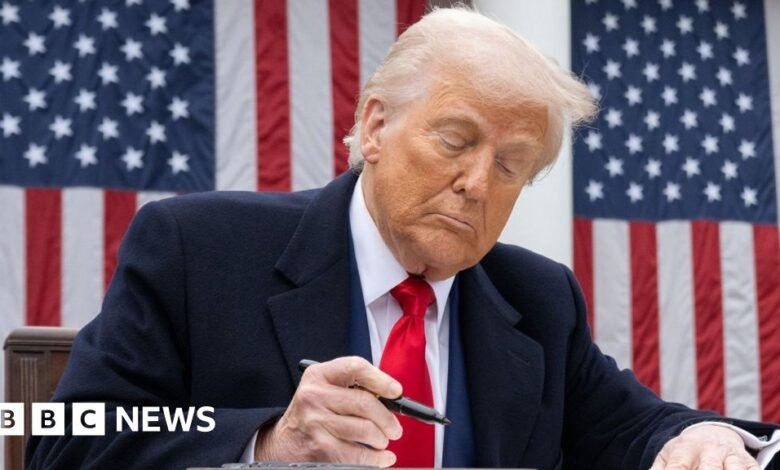Trump steps back from cliff edge of global trade war

For days, Donald Trump and his White House team had insisted they were fully committed to their decision to impose sweeping “reciprocal” tariffs on dozens of countries. They even derided a report on Tuesday that said the president was considering a 90-day pause – news that triggered a brief stock market surge.
But now that pause on higher tariff rates, with a few notable exceptions, is a reality. The reordering of the global economic order is on hold, and Trump’s promise of a golden age of American manufacturing will have to wait.
The White House has said that going big on tariffs and then hitting the pause button, before entering negotiations with individual countries, was the plan all along.
“We’ve had more than 75 countries contact us, and I imagine, after today, there will be more,” Treasury Secretary Scott Bessent told reporters shortly after the announcement.
That framing from the White House is not surprising, of course. And it is difficult to ignore the investor panic, tumbling bond market and growing public disapproval that preceded the announcement.
So was it a strategic retreat in the face of unexpected resistance, or yet another example of Trump’s “art of the deal” negotiating strategy at work?
It didn’t take long for Trump’s aides – many of the same people who said he would never back down – to fan out and celebrate the president’s move.
Trade adviser Peter Navarro said Trump’s tariff situation “unfolded exactly the way it should”.
“You clearly failed to see what President Trump is doing here,” press secretary Karoline Leavitt told a crowd of gathered reporters. “The entire world is calling the United States of America.”
They were less clear about the details of Trump’s tariff suspension, announced via a post on his Truth Social website. Did the reprieve in higher tariffs apply to the EU? Were Mexico and Canada, which had avoided the original 10% baseline tariffs, somehow now get included? Were tariffs targeting specific sectors affected?
Ultimately, the White House provided some clarity on these questions – but for hours US trading partners were left to scrutinise Trump’s Truth Social post and glean details from answers to questions shouted by reporters at press gaggles.
On Wednesday afternoon, Trump acknowledged that the markets had looked “pretty glum” and that “people were getting a little queasy” – a reflection that undercut some of the bravado he expressed over the past week and could hint at the real reason for his tariff change of course.
He insisted, however, that his tariff announcement was one that had to be made, and that any economic disruptions reflected a sickness that had been allowed to fester in the American economy.
Democrats, meanwhile, painted a less rosy picture. Senate Minority Leader Chuck Schumer accused Trump of “governing by chaos”.
“He is reeling, he is retreating, and that is a good thing,” he said.
In the end, the thought process behind Trump’s decision may not really matter.
The reality is that the US is now making nice – or at least nicer – with nations that had faced their retaliatory trade fire. It is letting the stock market bounce back, and leaning into a trade war with China which the president hit with 125% tariffs.
That will have global economic repercussions of its own, but it is more in line with recent American foreign policy – including that of Democratic President Joe Biden – as it seeks to constrain Chinese ambitions.
The big unknown, however, is whether Trump’s actions over the past week – setting allies scrambling and threatening the established global order – will have made such a strategy more difficult to pursue.
And in 90 days, when Trump’s pause expires, this week’s economic drama and uncertainty could begin all over again.



